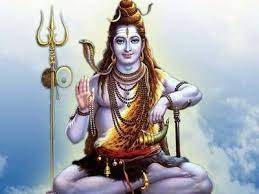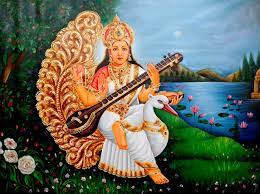
The story of the Trimurti: Brahma, Vishnu, and Shiva
The Trimurti, consisting of Brahma, Vishnu, and Shiva, is the Hindu concept of the three principal deities who are responsible for the creation, preservation, and destruction of the universe. These three gods are considered the most powerful in Hindu mythology, and their stories are woven into the fabric of Hinduism.
Brahma is the creator, Vishnu is the preserver, and Shiva is the destroyer. Each of these gods plays a critical role in Hinduism, and their stories are fascinating and complex. In this blog, we will explore the stories of Brahma, Vishnu, and Shiva, and the significance of the Trimurti in Hinduism.
Brahma - The Creator
Brahma is the first god in the Hindu trinity, and he is responsible for creating the universe. In Hindu mythology, Brahma is depicted with four heads and four arms. According to legend, Brahma was born from a lotus flower that grew from the navel of Lord Vishnu, who was in a deep slumber on the cosmic ocean. Brahma is also known as the father of the four Vedas, which are the holy scriptures of Hinduism.

Brahma's most famous story is his creation of the world. According to Hindu mythology, Brahma created the world by meditating on the cosmic waters, and from his thoughts emerged the four Vedas, which contain the knowledge of the universe. Brahma then created the gods, demons, humans, animals, and all other living beings.
However, Brahma's power and importance in Hinduism have diminished over time. In fact, he is rarely worshipped in Hindu temples, and there are very few temples dedicated to him. One reason for this is his ego, which led to a falling out with Lord Shiva. Brahma once boasted to Shiva that he was the most powerful god in the universe, and Shiva, in response, cursed him that he would never be worshipped by humans.
Vishnu - The Preserver
Vishnu is the second god in the Hindu trinity and is responsible for preserving the universe. He is considered one of the most important gods in Hinduism and is worshipped by millions of people around the world. Vishnu is depicted with four arms, holding a conch shell, a discus, a lotus, and a mace. He is also often shown reclining on a serpent called Shesha, floating on the cosmic waters.

Vishnu's most famous story is his ten incarnations or avatars. According to Hindu mythology, Vishnu has taken ten avatars to protect the world from evil and restore balance to the universe. The ten avatars are:
Matsya - a fish
Kurma - a tortoise
Varaha - a boar
Narasimha - half lion, half man
Vamana - a dwarf
Parasurama - a warrior with an axe
Rama - the hero of the epic Ramayana
Krishna - the hero of the epic Mahabharata
Buddha - the founder of Buddhism (this avatar is disputed)
Kalki - a future incarnation who will appear at the end of time to destroy evil and restore the universe to a state of purity.
Each avatar has a specific purpose and teaches a lesson about morality and righteousness.
Shiva The God of Trimurti
Shiva is known as the destroyer of the universe. In Hindu mythology, he is often depicted with matted hair, a crescent moon on his forehead, and a trident in his hand. He is also known as Mahadev, which means "great god" or "lord of all." Shiva is considered one of the most powerful gods in Hindu mythology, and his role as the destroyer is a vital one. According to Hindu belief, creation cannot happen without destruction, and that is where Shiva comes in. He is the one who brings about the end of one cycle of creation so that a new one can begin.

Shiva is also known for his fierce and unpredictable nature. He is often portrayed as a hermit living in the mountains, and his followers believe that he is constantly meditating to keep his temper in check. However, when angered, his wrath is said to be devastating, and he can bring about destruction on a massive scale.
There are many myths and legends associated with Shiva, and some of the most famous ones are:
The marriage of Shiva and Parvati - According to Hindu mythology, Parvati was the daughter of the mountain king Himalaya. She fell in love with Shiva and began to meditate to win his heart. Eventually, Shiva was impressed by her devotion and agreed to marry her.
The story of the churning of the ocean - In this myth, the gods and demons decide to churn the ocean to obtain the elixir of immortality. During the process, many things emerge from the ocean, including the deadly poison Halahala. Shiva drinks the poison to save the universe from its effects.

The battle with Andhaka - Andhaka was a demon who had become invincible due to a boon from Brahma. Shiva battled Andhaka and defeated him, but as a result, Andhaka's blood was transformed into another demon named Bana. Shiva went on to defeat Bana as well.
The dance of destruction - Shiva is often depicted performing the Tandava, a dance that symbolizes destruction. The Tandava is said to be so powerful that it can bring about the end of the universe.
In addition to his role as the destroyer, Shiva is also known for his compassion and generosity. He is often called upon to help people in times of trouble, and many Hindus pray to him for guidance and protection. Shiva is a complex and fascinating god, and his mythology has captured the imagination of people for centuries.
While the Trimurti are considered as separate entities, they are also believed to be interconnected and interdependent. This interdependence is reflected in the Hindu philosophy of Advaita, which posits that there is only one ultimate reality, and all beings are part of that reality.
Overall, the Trimurti represent the fundamental aspects of existence and the cyclical nature of the universe, providing a framework for understanding the complexities of Hindu mythology and spirituality.
Author
Darshita Nautiyal
(The images used in this podcast are not owned by Anime Devta, they are just to help the readers)

